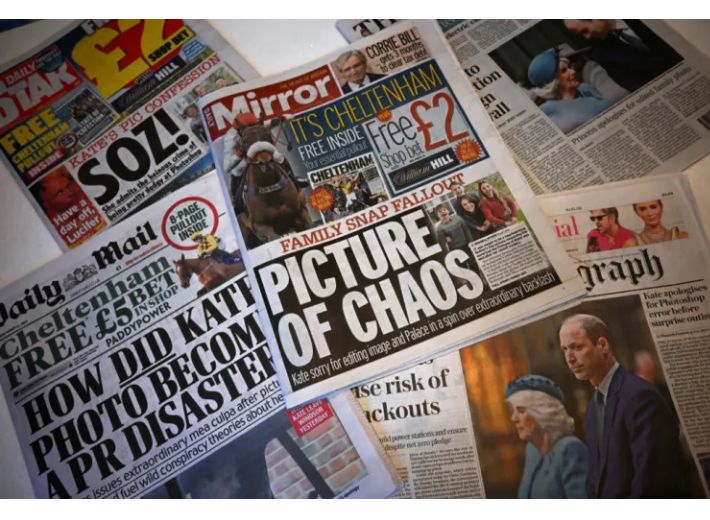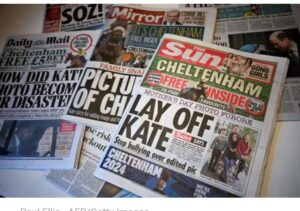CELEBRITY
The Royal Family Has a Trust Problem

A picture is worth a thousand words. But the British Royal Family received many more than it perhaps bargained for when it released a now-discredited photo of Catherine, Princess of Wales and her children to mark Mother’s Day in Britain. Kate later apologized for any confusion, saying that the family portrait had been subject to “editing,” after international news organizations and photo agencies took the rare step to remove the image from distribution, with some such as the Associated Press citing its violation with their editorial standards. The imaging team at The Guardian newspaper identified 20 anomalies in the photo, which it suggests was created with “multiple frames” that “were likely used to composite a more intended final result.
The Royal Family couldn’t have manufactured—or, rather photoshopped—a worse outcome. For weeks, speculation about the whereabouts and overall health of the Princess of Wales, who has been taking time off from her royal duties following an abdominal surgery in January, has run rampant on social media. Though Kensington Palace issued statements slapping down some of the more serious allegations (one, presented by a Spanish journalist, suggested that Kate was in a medically-induced coma), it has mostly remained
silent—until Sunday, when it posted the photo of Kate and her children, purportedly taken by Prince William, to its account on X, formerly known as Twitter, and Instagram. But rather than support the palace’s reassurances that the princess is doing well, it achieved just the opposite, sending the online rumor- and conspiracy-mill into overdrive.
this was the photo that the palace had to get right. That they didn’t has not only threatened to undermine the legitimacy of their communications in the international press (CNN has stated that it will be “reviewing all handout photos previously provided by Kensington Palace”), but has also tested the deference of the British press. Until recently, the British papers had treated the story with kid gloves, opting against publishing a recent paparazzi photo of Kate circulating in the U.S. press (a policy that dates back to the death of Princess Diana
For the royal press pack, the admission that the photo had been tampered with “represented an opportunity to explore this story and to ask difficult questions that so far haven’t been asked about what exactly happened to [Kate],” says Owens. Indeed, many tabloids have the photo controversy leading their Tuesday front pages, with the Daily Mirror dubbing it a “PICTURE OF CHAOS” and the Daily Mail dubbing it “A PR DISASTER.” Only The Sun appeared to take a more defensive tone, telling its readers (and all “social media trolls, idiotic conspiracy theorists, and sniping media critics”) to “LAY OFF KATE.

Some observers are more skeptical that this crisis will have any lasting impact on the Royal Family’s long-standing relationship with the British tabloid press, in large part because it’s so mutually beneficial. “The tabloids understand that they need the Royals to survive and thrive,” says Tessa Dunlop, a British historian and author of Elizabeth and Philip, noting that tabloid print readers tend to lean older, more conservative, and more royalist than those following this story online. Where there has been a notable shift, she says, is that the Royal Family appears more inherently vulnerable, having lost so many key players (namely, the late Queen and Prince Harry and Meghan). And the working royals who remain may not necessarily want to be as visible as they once were.
This unspoken agreement between the press and royalty is that it’s the royals’ duty to go out and be seen and the press’s duty to catch them going out and being seen,” Dunlop says. “But what happens if one half of the equation is suddenly wanting to reexamine the rules?” Whereas the British press might have once been able to compel the Queen to address the public in the wake of Princess Diana’s death, for example, this new generation of royals has proven less amenable to being pressured into action—whether it’s showing up to a World Cup final or, in this case, releasing an unedited photograph.






